Introducing the Nintendo Switch 2: Why You Should Upgrade
Nintendo have finally unveiled the Switch 2 – their next-gen hybrid console and the long-anticipated successor to the original Switch. Although the Nintendo Switch 2 looks and plays a lot like the nearly decade-old original, the console’s developers boasted in the April edition of Nintendo Direct that it has been reworked from the ground up. The livestream gave fans a closer look at the changes to the Switch 2, including reimagined hardware, new ways to play and connect, and numerous games. Are they enough to encourage hardened Switch fans to upgrade? We’ve broken down five key areas where the Switch 2 differs from the original console to help you make an informed decision.
The hardware
A bigger screen
Noticeably larger than the original Switch but the same thickness, handheld players will be immersed in a 7.9-inch screen: almost 2 inches bigger than the original Switch’s 6.2-inch and almost a whole inch bigger than the Switch OLED’s 7-inch.
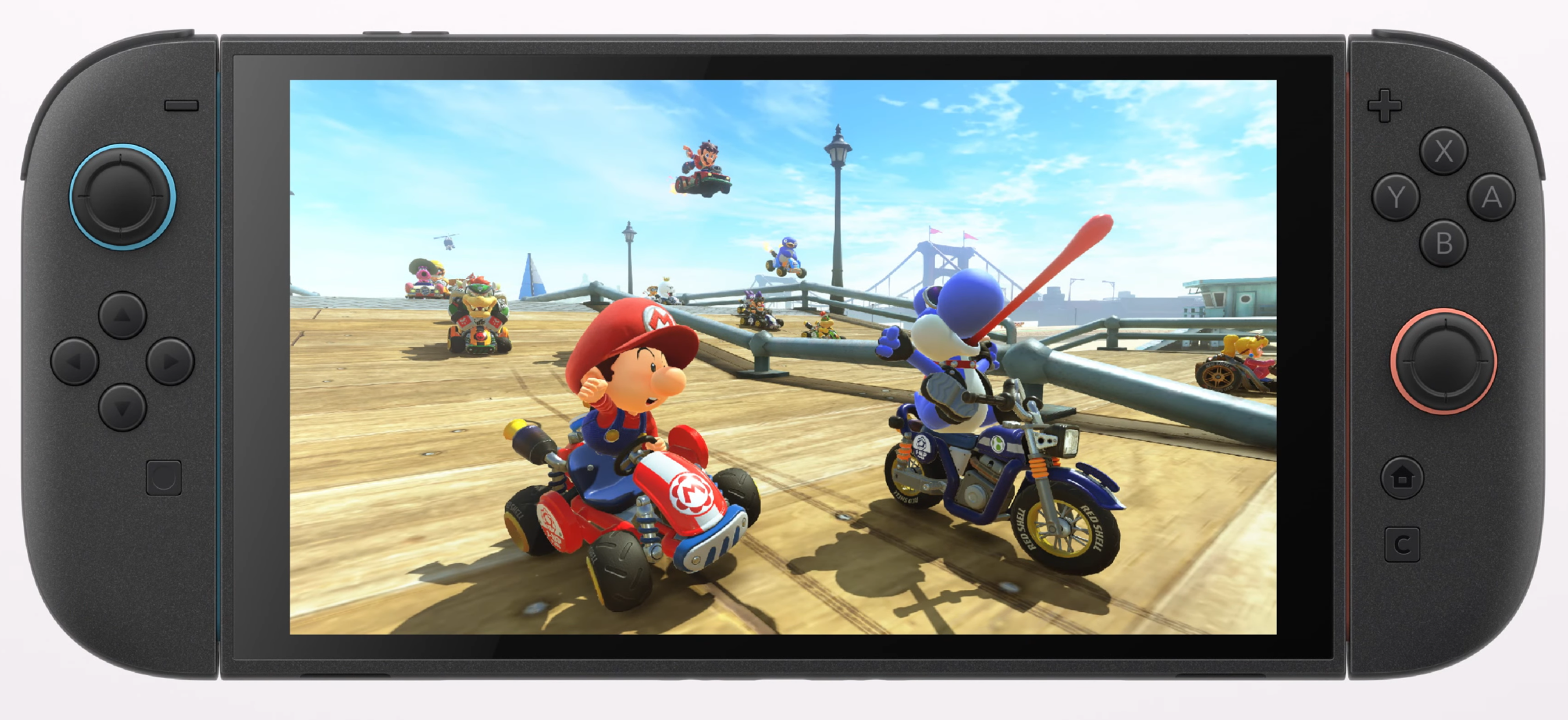 Image courtesy of Nintendo.
Image courtesy of Nintendo.
HDR support and 120fps are also new to the sequel console, but – and this may be a dealbreaker – the Switch 2 shares the same LCD technology as its 2017 ancestor. If you primarily use the handheld and tabletop modes to play and aren’t fussed about frames per second, it may be better to stick with the Switch OLED.
Storage wins and woes
Where Nintendo haven’t skimped is the storage: the Switch 2 boasts 256GB of space, a massive increase from the original’s 32GB and the OLED’s 64GB. Eight times the capacity of the original Switch, this means much more room for save data, and faster load and save speeds. This will be welcome news to those of you who spend valuable game time juggling microSD cards to find the right save data, especially because those SD cards – the special Nintendo ones with their bright, friendly icons – will not work on the Switch 2.
 Image courtesy of Nintendo.
Image courtesy of Nintendo.
MicroSD Express is the way of the future, so those of you looking to upgrade may have to say goodbye to your hard-earned saves and rewards. For those who prefer on-console storage, Nintendo have made moving over to the Switch 2 as easy as possible. System Transfer is a new feature for the Switch 2 that packages and transports your profiles, Nintendo Accounts, save data and settings for you. All you need to provide is an internet connection.
TV mode
There’s nothing but good news for players who prefer a bigger screen – TV mode for the Switch 2 supports 4K and a wealth of other compatibility features. The dock has been redesigned for better TV playback, with a built-in fan supporting better performance with no overheating. CEC (Consumer Electronics Control) automatically switches your TV to the right source when you plug the Switch 2 in, which is very useful if you’ve got lots of things connected at the same time. ALLM (Automatic Low Latency Mode) puts compatible TVs into gaming mode, which makes setting up the Switch 2 even easier. VRR (Variable Refresh Rates) and HDR are also featured, making your gameplay look as good as possible.
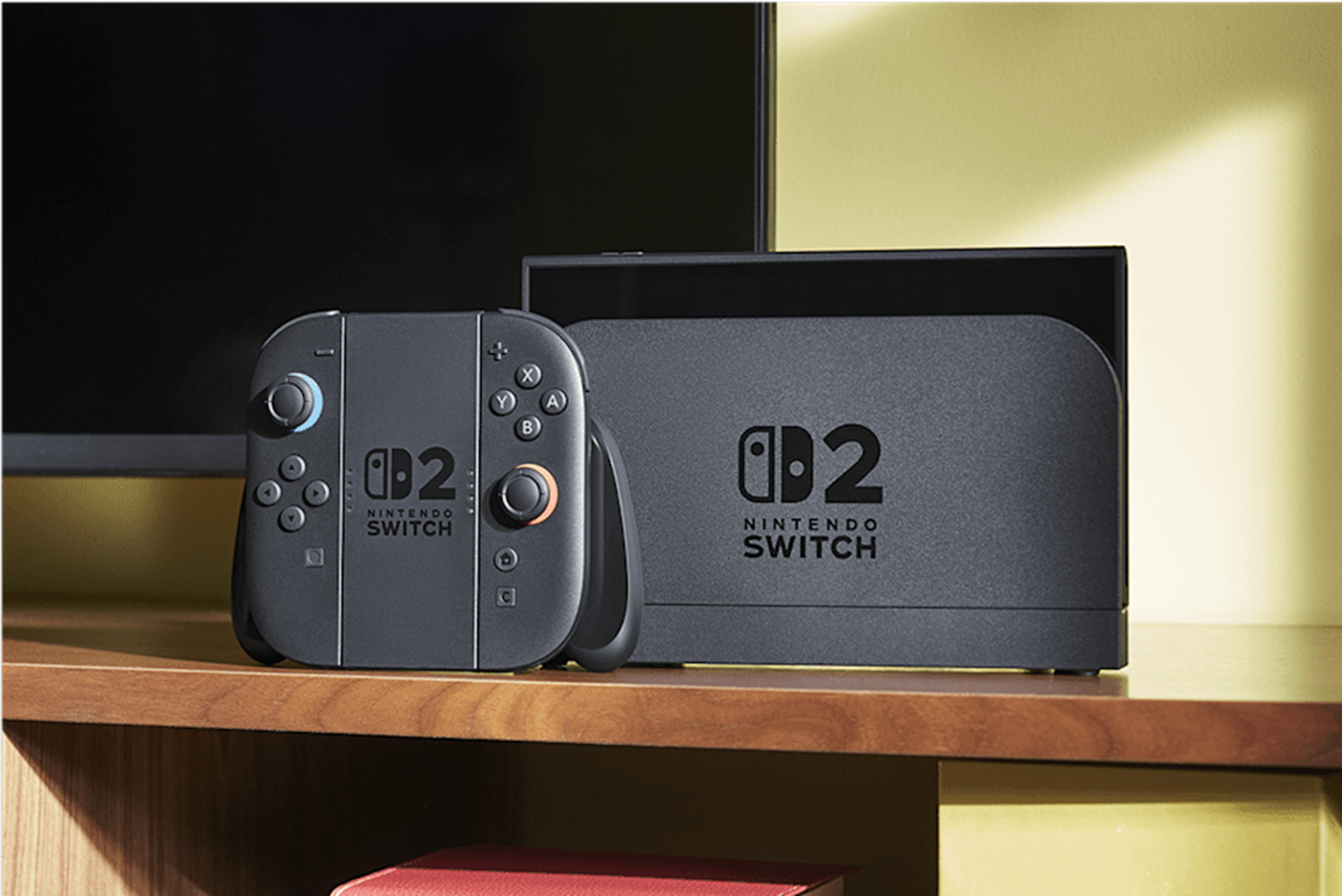 Image courtesy of Nintendo.
Image courtesy of Nintendo.
The only hard choice you’ll have to make in TV mode depends on your thoughts on fps (frames per second) – you can either play in 4K at 60fps, or in FHD and lower at 120fps. While this won’t be a dealbreaker for many, it highlights how the quality of your gameplay is largely dependent on the quality of your TV. If it isn’t compatible with 4K, CEC, or ALLM, you won’t get those benefits.
The controllers
Joy-Con 2
The Switch 2 comes with the Joy-Con 2, an upgraded version of the original console’s controllers. These have been completely overhauled, answering many of the complaints people had with the original. The larger controller size, designed to fit the expanded screen, is complemented by bigger and sturdier buttons and joysticks – a welcome change for anyone who has struggled to play with a single Joy-Con.
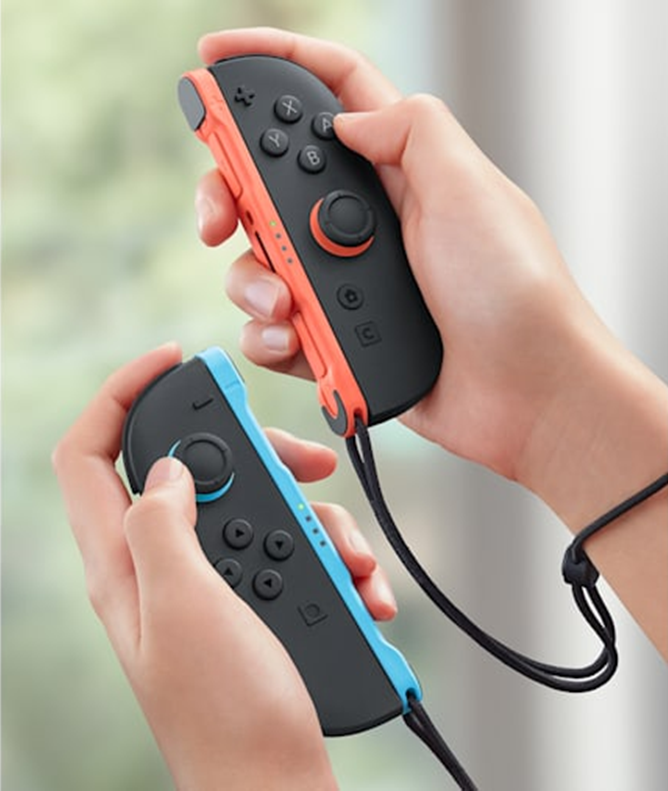 Image courtesy of Nintendo.
Image courtesy of Nintendo.
The way the Joy-Con 2 controllers plug into the Nintendo Switch 2 has been completely changed. The slide-in tracks have been replaced with a magnetic snap-in system, making playing in handheld mode feel sturdier. Playing with the Joy-Con 2 controllers unplugged opens up a whole new way to interact. Sensors on the inside of the Joy-Con 2’s connectors allow you to use each controller as a mouse. You will be able to explore mouse controls in full with Drag x Drive, a wheelchair basketball game coming to the Switch 2 in the summer of 2025.
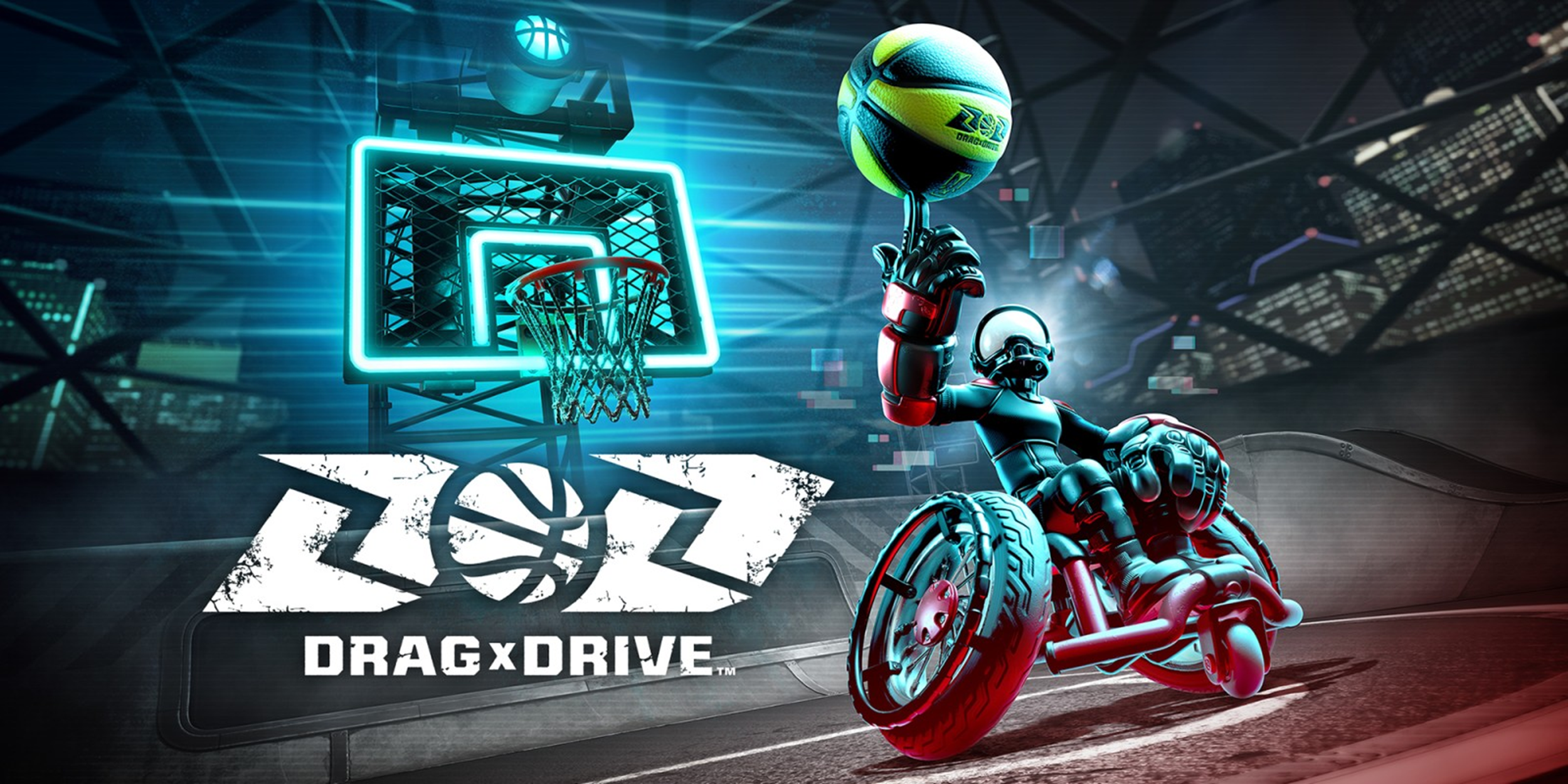 Image courtesy of Nintendo.
Image courtesy of Nintendo.
Switch 2 Pro controller
Also launching with the Switch 2 is the successor to the Switch Pro Controller. Like the Joy-Con 2 controllers, it has been upgraded with new features and enhancements, including mappable GL and GR buttons on the back and a 3.5mm audio jack, making it easier to use the Switch 2 in tabletop mode with wired headphones.
Backwards compatibility
If you’ve built a collection of Joy-Cons and other controllers for the original Switch, you can relax – they’re all compatible with the Switch 2!
New ways to interact
GameChat
Playing Nintendo Switch games online has just become a whole lot easier and way more interactive. Exclusive to the Switch 2 is GameChat, a built-in voice chat, video chat, and screen-sharing service. The Switch 2’s new built-in microphone handles voice chat, while video comes courtesy of the new USB-C port and the Nintendo Switch 2 Camera (sold separately). Some Switch 2 games feature new camera-enabled features, allowing you and your friends to become part of the on-screen action.
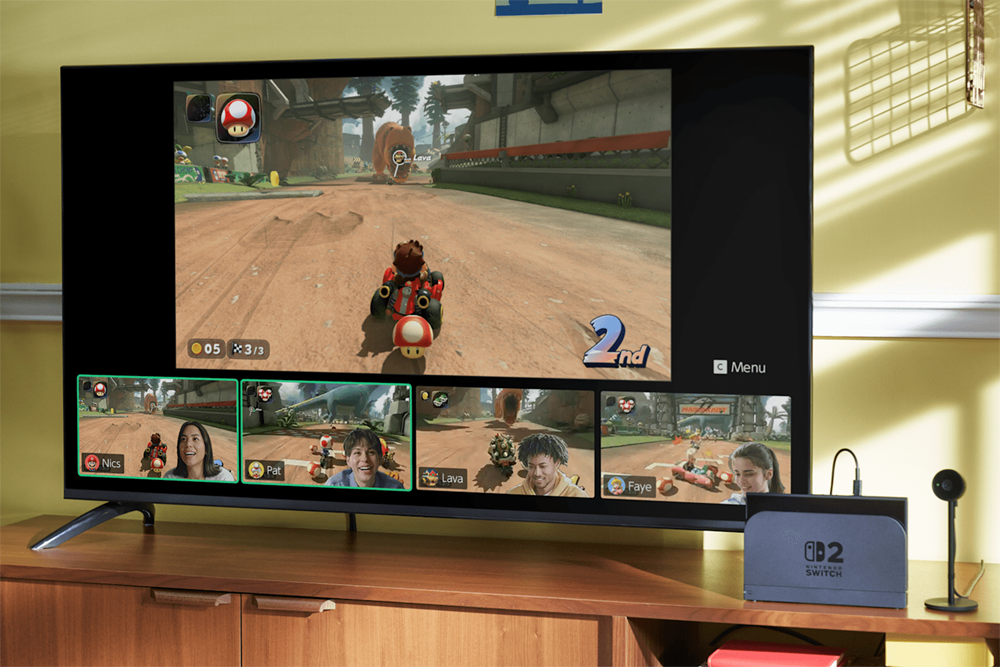 Image courtesy of Nintendo.
Image courtesy of Nintendo.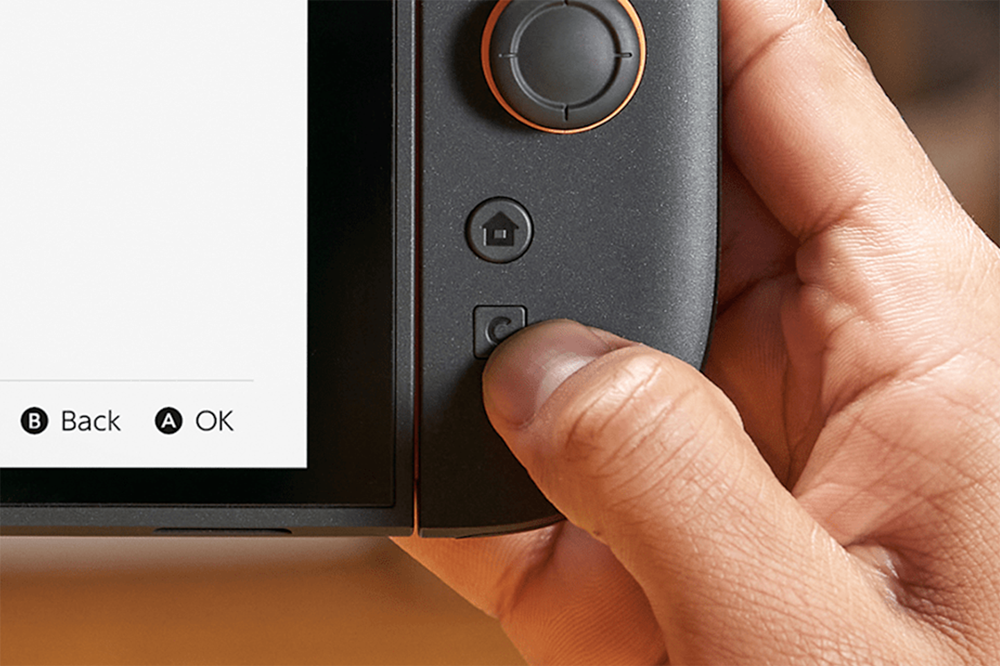 Image courtesy of Nintendo.
Image courtesy of Nintendo.With the ability to chat with up to 12 players or share screens and videos with up to 4, GameChat is an excellent option for multiplayer gaming. GameChat isn’t just for multiplayer games, though – you can jump in to commentate on your friends’ single-player games as well! To keep things safe for younger gamers, only people on your Friend List can take part in chats, and text message verification is required to set up.
Starting GameChat is quick and easy; the Joy-Con 2 and Switch 2 Pro controllers both come with a built-in C Button that lets you launch GameChat while playing.
GameShare
Joining GameChat is GameShare, a feature that lets you share supported games with players who don’t have their own copy. You can share games locally with players in the same room as you using Switch 2 and original Switch consoles, or online with GameChat exclusively for Switch 2 users.
The games
Alongside new hardware and features, the April 2025 Nintendo Direct also gave us a sneak peek at some of the games coming to the Nintendo Switch 2.
Mario Kart World, Kirby Air Riders and Donkey Kong Bananza
Launching with the console will be Mario Kart World, the latest title in the fan-favourite racing series. This entry takes the series to the next level by connecting all the tracks together into an open world, where 24 racers battle their way from race to race in order to become the champion.
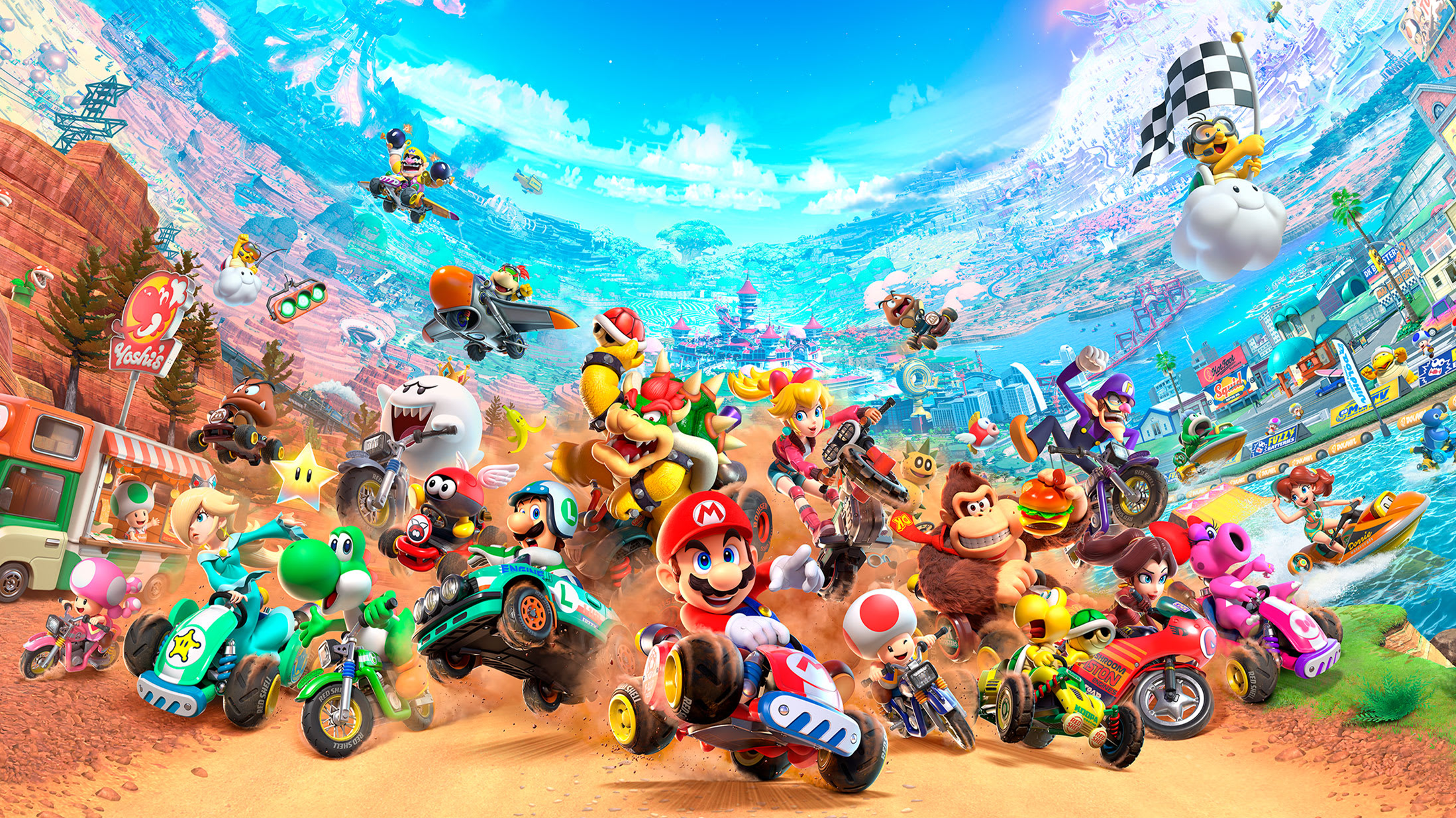 Image courtesy of Nintendo.
Image courtesy of Nintendo.
Also promoted in the Nintendo Direct was Donkey Kong Bananza, a 3D open world game where the classic character smashes his way through the landscape to recover golden bananas. The left-field announcement this time was Kirby Air Riders, a sequel to a beloved GameCube game directed by the legendary Super Smash Bros. developer Masahiro Sakurai.
Switch 2 Edition games
Select games for the original Nintendo Switch are due to be ported to the Nintendo Switch 2. Titles including Mario Party Jamboree, Metroid Prime 4: Beyond and The Legend of Zelda: Tears of the Kingdom will be rereleased as Switch 2 Edition games, taking advantage of the console’s new features and expanded capabilities. Gamers with the original Switch versions of these games will be able to buy Upgrade Packs from the Nintendo eShop, giving them access to the Switch 2 Edition for a fraction of the price.
Third-party ports and backwards compatibility
Also joining the fun on the Nintendo Switch are ports of major AAA games, such as Hitman: World of Assassination, Elden Ring, and Final Fantasy VII, as well as fan-favourite indie titles like Deltarune, Hades II, and Hollow Knight: Silksong. If you already have a sizable collection of original Switch games, you won’t have to start from scratch: the Switch 2 is backwards compatible with most original Switch games, so you can still use your Switch cartridges and re-download your digital games.
Is it worth the upgrade?
The Nintendo Switch 2 delivers faster loading times, more storage, and a larger screen. However, Switch OLED owners may see the shift from OLED to LCD as a downgrade. For TV-focused players, the upgrade is compelling, offering visuals that surpass both the handheld mode of the Switch 2 and the TV mode of the original Switch.
Handheld or tabletop gamers who value screen quality may prefer sticking with the OLED model. The enhanced controllers fix many past issues, making them a strong selling point for players who prioritise feel and responsiveness.
Social and online multiplayer fans will appreciate the built-in chat and game-sharing features, which make it easier than ever to play together. These improvements make the Switch 2 especially appealing for gamers who value interaction and cooperation.
While the Switch 2 supports both new releases and many existing titles, game prices will be higher than before. Backwards compatibility for older Switch games will be rolled out gradually, meaning some players may not be able to access their full library right away.
Overall, the upgrade is worth it if you primarily play on a TV, value better controls, or want improved social features. It may not be the best choice for handheld-first OLED owners or those concerned about higher costs and incomplete backwards compatibility.
Final thoughts
The Nintendo Switch 2 promises to be an enormous step up. With extensive improvements to the hardware, more ways to play together and exciting new games on the horizon, there is plenty to look forward to. However, some players may find a few of the changes to be deal-breakers: the LCD screen, the lack of compatibility with original Switch SD cards, and the massively increased price of games and consoles will certainly impact some gamers more than others.
The Nintendo Switch 2 is set to launch globally on June 5, 2025. For more information, you can watch the Nintendo Direct livestream below:



